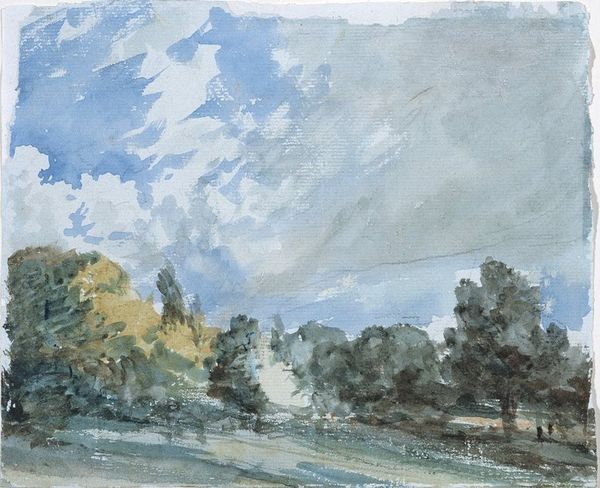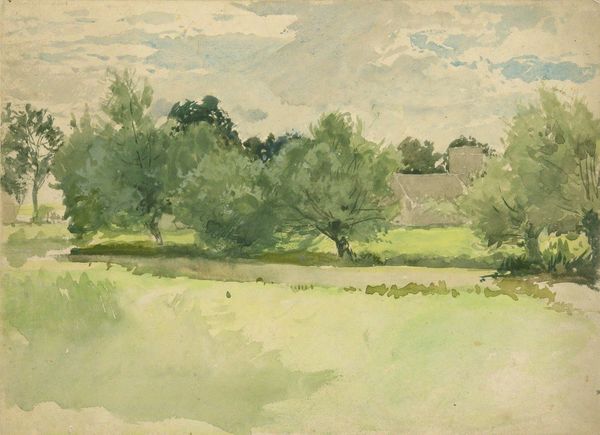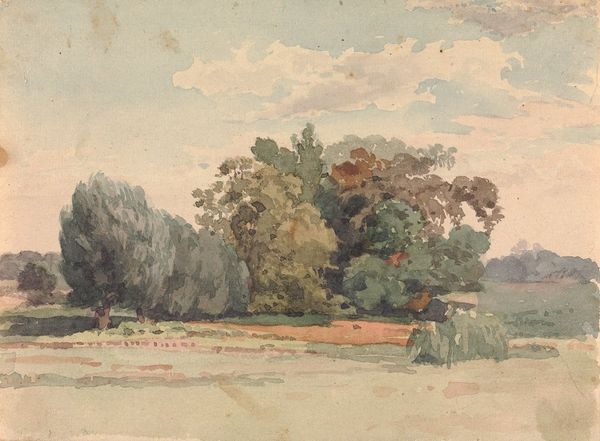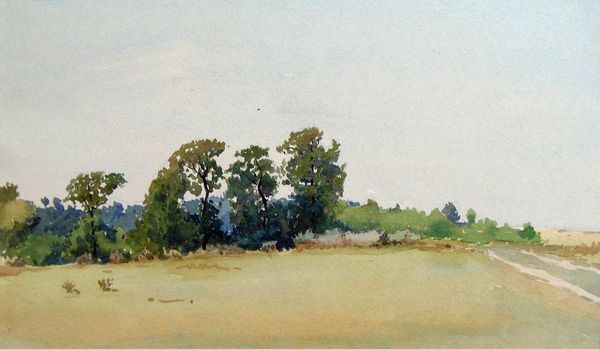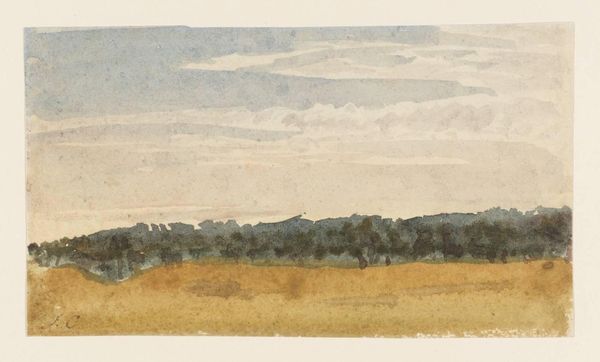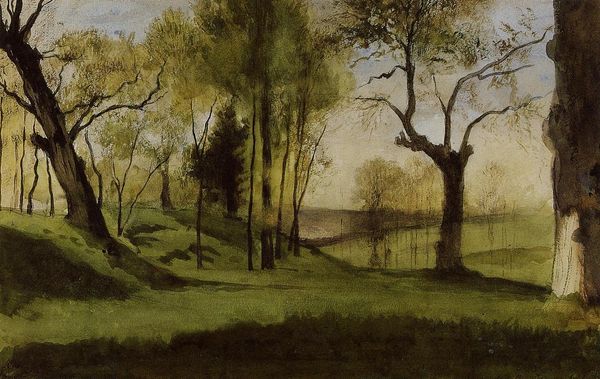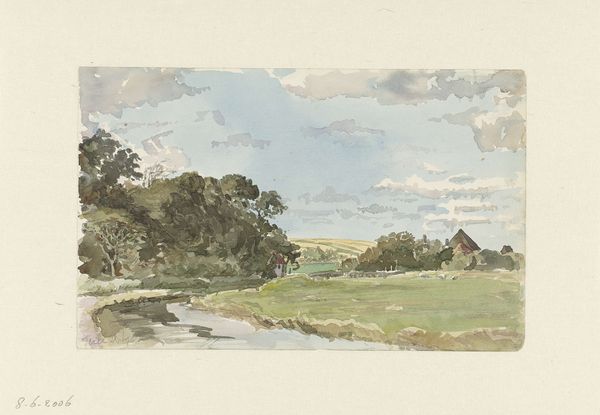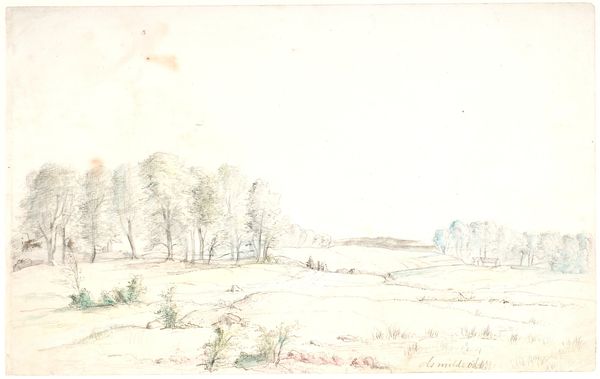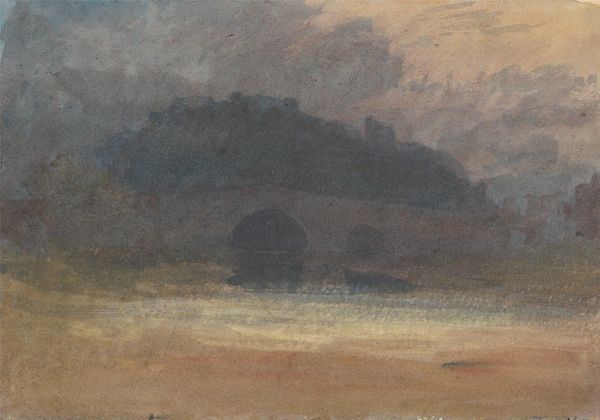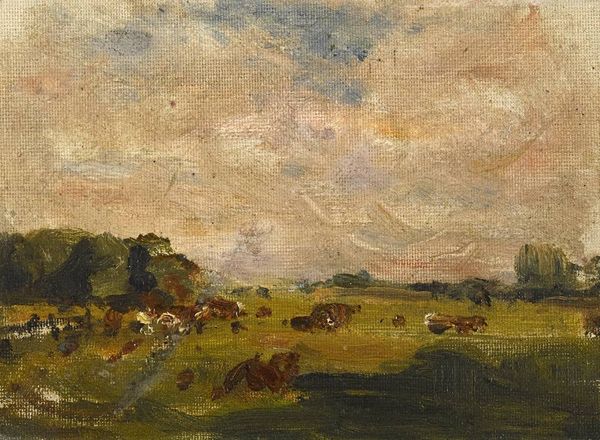
painting, plein-air, watercolor
#
water colours
#
painting
#
impressionism
#
plein-air
#
landscape
#
watercolor
#
genre-painting
#
post-impressionism
#
mixed media
#
watercolor
Copyright: Public domain
Curator: Here we have Camille Pissarro's "Eragny Landscape," created in 1890. It's currently held in a private collection. Editor: Immediately, I'm struck by the hazy atmosphere, almost dreamlike. The subdued colors create this incredible stillness. Curator: Pissarro was deeply involved in the Impressionist movement, championing painting en plein air to capture the fleeting effects of light. Later on, we can definitely trace elements of post-impressionism in his commitment to examining the structures of the landscapes. Editor: The material itself tells a story. Watercolor lends itself so well to this sense of transience. Look how he builds up the layers to evoke a hazy field. It is so ethereal, capturing not just a landscape but the sensation of being within it. How was watercolor perceived during the period, though? Curator: Its perceived ephemerality certainly meant it wasn't always valued alongside more traditional media like oils. Watercolor held an interesting position. Sometimes viewed as a quick sketching tool, a preliminary medium, it gained greater recognition, particularly with artists seeking to capture the subtleties of light and atmosphere in landscapes. Pissarro found watercolor particularly accessible because he wanted to explore art outside formal institution. Editor: Yes, there's something inherently democratic about watercolor, and it's immediacy! It allowed for a more direct engagement with the subject matter and bypassed some of the laborious processes associated with oil painting. The blurring is actually its most distinctive, engaging characteristic. I think it is fascinating how the social position of certain media influences how art got made! Curator: Absolutely. And think about how Pissarro's commitment to rural scenes and peasant life further complicates traditional hierarchies within art. It emphasizes a world untouched by industrial progress during a period of rapid change. This work almost seems nostalgic. Editor: Almost like a record, registered in color and tone, not necessarily in subject. And that brown is so vibrant and strange at the same time. What I admire about his approach to art making is how seemingly mundane materials can become tools to represent such fleeting but specific moods. Curator: A fleeting mood anchored by the socio-political context of the era. Editor: An interesting intersection to consider. Curator: Indeed. The very nature of Pissarro's watercolor is a story that tells us about artistic hierarchies, about production, and about social change in the late 19th century.
Comments
No comments
Be the first to comment and join the conversation on the ultimate creative platform.
